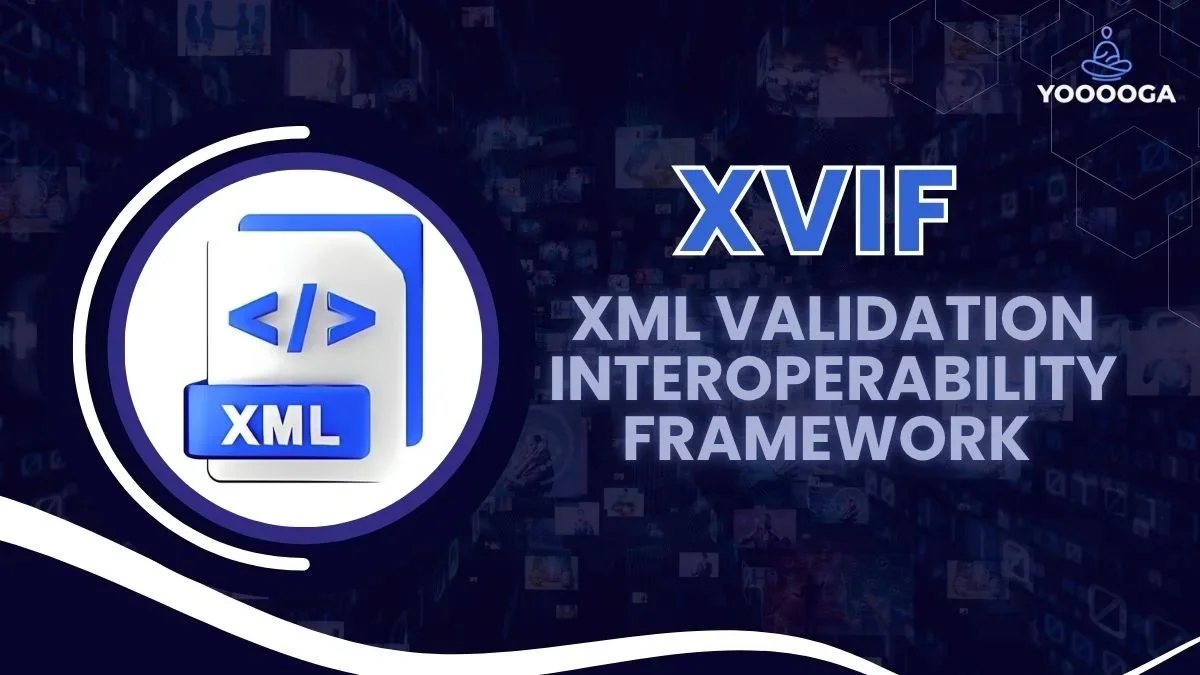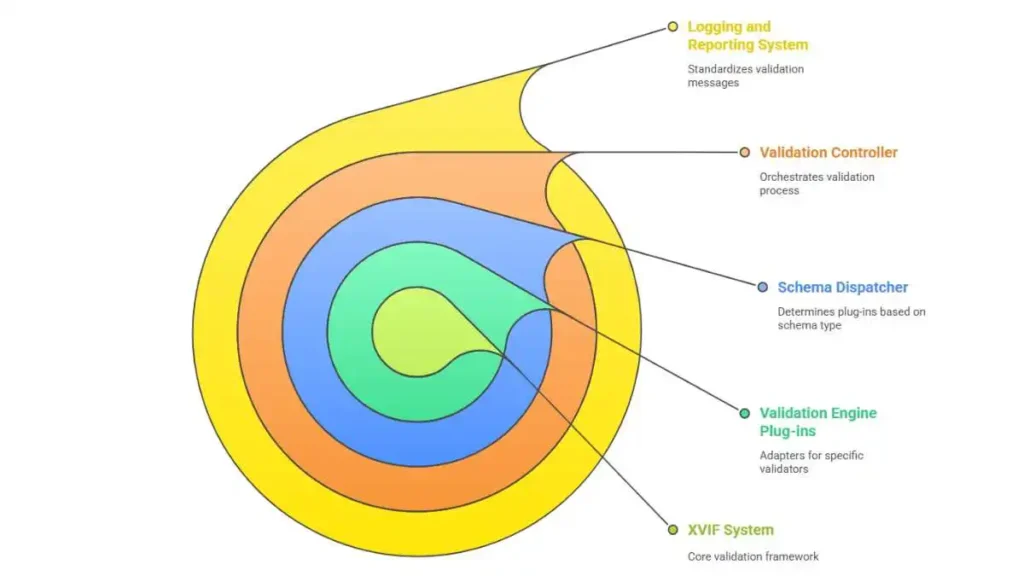Tech
XVIF: A Unified Approach to XML Validation Interoperability

XVIF (XML Validation Interoperability Framework) is a proposed architectural solution aimed at harmonizing the XML validation process by enabling interoperability between disparate schema standards. It supports a plug-in model, allowing different validation engines—such as those for DTD, XSD, RELAX NG, and Schematron—to work seamlessly within a unified framework.
Designed for extensibility and cross-compatibility, XVIF offers centralized control over XML validation, reducing the fragmentation seen in current toolchains. By abstracting schema differences and standardizing error handling, it allows developers and organizations to validate complex XML workflows efficiently. It represents a significant step toward creating a cohesive and scalable XML validation ecosystem.
Table of Contents
The Vision of XVIF
XVIF (XML Validation Interoperability Framework) vision is to develop a clean, shaped, and widened platform that would make XML validation less demanding due to a variety of schema Languages. By using an architecture with several validation engines (including DTD, XSD, RELAX NG, and Schematron) in a plug-in (meaning that they can be added later on) style structure, XVIF is supposed to remove fragmentation and lead to interoperability.
It has a vision of a system where XML documents can be validated by developers using one interface and for any type of schema with consistent error reporting and efficient work processes. Finally, XVIF aims at establishing a new standard in XML processing, namely a modular, extensible, and flexible to the changing data validation requirements one.
Core Architecture and Components
The XVIF prototype was designed around a modular and extensible architecture, comprising the following core components:
1. Validation Engine Plug-ins
These are the heart of the XVIF framework. Each plug-in acts as an adapter for a specific validator—such as Xerces for XSD, Jing for RELAX NG, or Skeleton for Schematron. Plug-ins follow a standard interface so they can be seamlessly managed by the framework.
2. Schema Dispatcher
The dispatcher is responsible for determining which plug-in(s) to invoke based on the schema type provided. It supports multi-schema validation, meaning a single XML document could be validated against multiple schemas of different types in a sequential or composite manner.
3. Validation Controller
This component orchestrates the overall process—accepting XML documents, delegating tasks to the dispatcher, aggregating results, and managing error handling and logging. It can be exposed as an API or a command-line interface for broader usability.

4. Logging and Reporting System
Uniform diagnostics are essential for developers and data engineers. XVIF was designed to consolidate validation messages, error codes, and line numbers into a standardized format, regardless of which engine produced them.
5. Configuration Manager
Through a flexible configuration system, users can specify validation rules, schema file paths, engine priorities, and error-handling strategies. This helps tailor the framework to various use cases and integration contexts.
Use Cases and Benefits
Although XVIF was never fully realized into a mainstream tool, its proposed functionality targeted several key areas in XML-heavy environments:
- Cross-Validation Scenarios: Organizations that rely on legacy XML systems might have documents that are validated using DTDs, while modern systems require XSD or RELAX NG. XVIF would allow these documents to be validated against all applicable schemas simultaneously, increasing reliability.
- Compliance and Standards Enforcement: Sectors like finance, healthcare, and government frequently work with standard XML formats such as HL7, NIEM, or FpML. These standards often include multiple layers of validation rules—some structural, others logical. It could integrate structural checks (XSD/RELAX NG) with rule-based validation (Schematron) in a cohesive manner.
- Toolchain Integration: Developers could embed XVIF into CI/CD pipelines, allowing automated validation of XML configuration files, data feeds, or service payloads before deployment.
- Educational and Research Use: Universities and research institutions experimenting with various XML schema standards could use XVIF as a sandbox for comparative analysis and compatibility testing.
Technical Challenges
Although the objectives of XVIF were lofty and far-looking, the structure was to have several technical and adoption-related issues, among them:
- Performance Overhead: Using multiple validators simultaneously, at least via a large dataset, may open up latency, resource consumption problems.
- Error Normalization: Engines report errors in different ways, which means that a really consistent diagnostics is hard to come by.
- Schema Compatibility: Some schema languages do not represent the same constraints and as such it is possible to have ambiguity when merge validations together.
- Dependency Management: Every plug-in may need different versions of libraries or engines, and this causes dependency trees.
- Low Adoption: XVIF has no specific support by a large standards organization or vendor, which means that it may be difficult to penetrate an already mature platform of XML tools.
Comparison of XML Schema Languages and XVIF’s Unifying Role
| Feature | DTD | XSD | RELAX NG | Schematron | XVIF’s Role |
| Validation Type | Structural | Structural + Data Types | Structural + Flexibility | Rule-based (Assertions) | Combines all types for comprehensive validation |
| Namespace Support | No | Yes | Yes | Yes | Integrates validators with/without namespace support |
| Data Type Support | Limited | Strong | Flexible (XML/Compact Syntax) | Limited | Harmonizes data type validations across engines |
| Error Reporting | Basic | Detailed | Varies | Custom Messages | Standardizes and centralizes error reporting |
| Tool Support | Widely Available | Extensive | Moderate | Specialized Tools | Acts as a unified interface for all validation tools |
XVIF in Retrospect
Although not widely realized and used, XVIF nevertheless can be viewed as a significant conceptual transition in the history of XML validation practices. The concepts of it still shape the way designers approach modularity in schema design, tool interoperability and workflow integration.
Interoperability in modern XML tooling ecosystems (including Oxygen XML Editor, Saxon and XMLBeans) has approached some of these concerns in either proprietary or semi-standard manners. Nevertheless, it still lacks any universally accepted orchestration of validation framework like the one XVIF suggested.
Conclusion
XML Validation Interoperability Framework (XVIF) is one of the intelligent, technically viable models to surmount one of the most afflictions of the XML problems the fragmentation and incompetibility of the schema validation tools. By providing plug-in-based, integrated architecture to integrate DTD, XSD, RELAX NG and Schematron, XVIF was designed to simplify validation process and bring consistency to systems.
-

 GENERAL5 months ago
GENERAL5 months agoChristofle – For Those Who Dream of Family Heirloom Silver
-

 SPORTS7 months ago
SPORTS7 months agoDiscover the World of Football with Streameast: Watch Your Favorite Leagues and Tournaments
-

 GENERAL4 months ago
GENERAL4 months agoUncovering the World of кинокрадко: The Dark Side of Film Piracy
-

 GENERAL2 months ago
GENERAL2 months agoATFBooru: Anime, Gaming, and Subculture Imageboard























